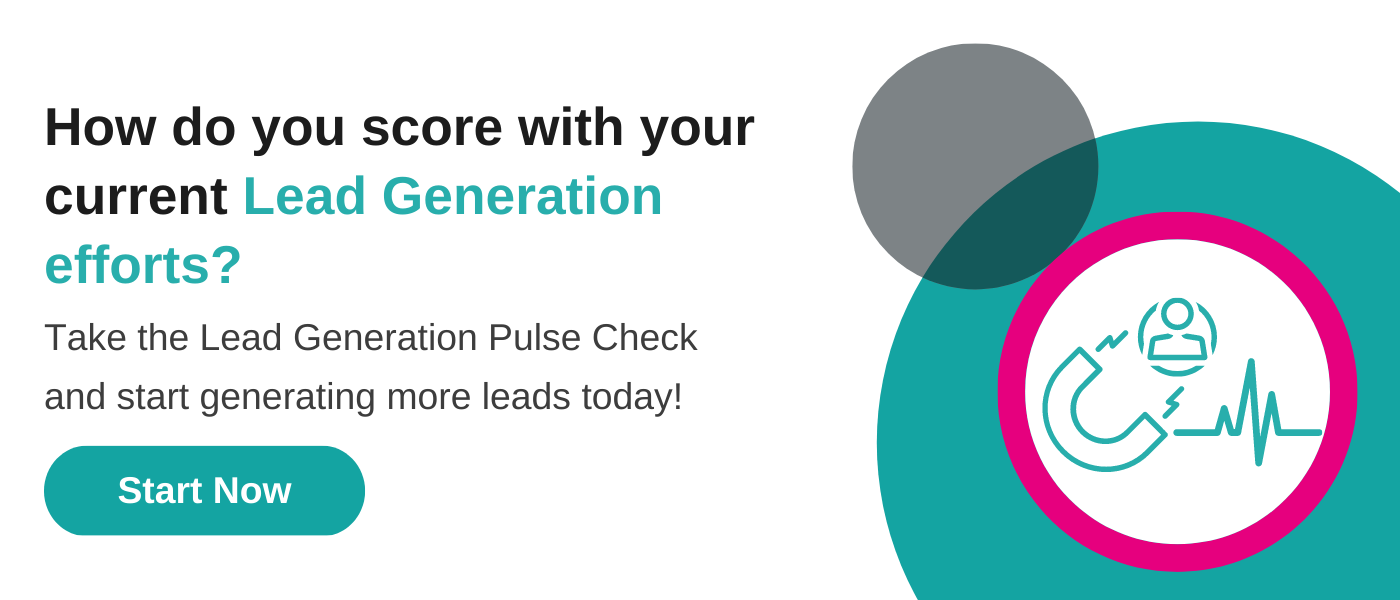“We need more leads!” The familiar cry of business leaders up and down the country.
While this insistent hunt for leads often ignores deeper issues within a business, they’re undeniably essential to a business’ growth.
While lead generation is not the sole function for marketing (contrary to popular belief), it’s one area that it can have huge, valuable impact. Great marketing can attract the attention of potential buyers, encourage them to find out more about your product or service, and get them ready to purchase.
So what do you need to know about marketing and lead generation?
Where to begin
A quick exercise. Write down your definition of a lead. Now ask your sales team to do the same. Then ask a marketer. Chances are you’ll have three different answers: and none of them are wrong.
The sales team may define a lead as a red-hot contact, on the brink of making a purchase. Marketing may define it as someone who gave up their contact details. Job one, therefore; define what a lead is and get the sales and marketing teams aligned.
Many businesses actually split the definitions to smaller components - marketing qualified leads (MQL) and sales qualified leads (SQL) - to placate the two teams. This can be helpful, but the need for clear definitions is no less essential.
To reach an agreement, source input from both teams. Of course, a sales team would ideally like someone with money in their hand ready to throw at them the minute they answer the phone, but this is unrealistic. Meanwhile, marketing can get to a place where its qualifying leads in terms of business size, contact job role, engagement with marketing materials and the like.
Job two, set goals. Many companies decide to use a specific lead generation technique (“I need an advert…”) and then think about how to make it work. That’s like buying a hammer and then looking for something to nail together. Think about what you want to achieve first and then look at the techniques for getting there.
Measuring up
So what does good look like? At the risk of sounding flippant, good is what works.
Again, the tactics for lead generation can vary wildly from business to business: there is no prescriptive, one-size-fits-all approach no matter if you’re B2B or B2C, a large corporate or a small to medium sized business. Instead, you need think carefully about your products and services.
If you’re selling chemical machinery to processing plants, your methods and content for lead generation will be very different to a company which supplies stationery to schools. Both are B2B, but the process, channels and length of the buyer journey is likely to vary hugely. The solution needs tailoring to the situation.
If you have a firm set of goals in place and a solid lead generation and sales process in place, it’s easy to tell if things are working. You’ll have some success metrics and will be able to tell if you are achieving them.
Beware of the “Iike it” vs “it works” discussion about results. You should only care about what gets results, which will quite often not be the prettiest or sexiest approach. Be prepared to implement, test, measure and correct. It’s what your customers respond to that matters - and that’s not always what you expect.
It always helps to have a detailed marketing dashboard to monitor progress and success.
How long does it take?
There are three answers to that question. One is strictly in terms of lead generation processes and tactics; the second is the time it takes to produce materials; the third is how long it takes to work.
Simple processes like Google Adwords can be set up very quickly An inbound marketing strategy with regular content marketing, social media, newsletters, eBooks, a lead scoring process to ascertain the quality of the leads coming in, and effective handover strategies between sales and marketing can take much longer. The process never really ends, though: this is a long term investment that will constantly evolve.
Producing materials for lead generation is more variable. A Facebook advertising campaign is quick, but anything which takes design or production could take weeks. If you’re creating something like an e-book, it can take months. And if you’re planning on exhibiting at trade shows it can take a full 12 months to be fully prepared. Remember, anything you produce will reflect your brand. Getting it wrong could cause irreparable damage, so take the time to make sure it’s as on-message as possible.
And how long does all this take to work? Instant responses are rare. In advertising, the prospect needs to see your ad three times before they actually decide to act on it. (Here’s more on how to advertise effectively)
The key for a long term lead generation strategy is to implement, test, measure and correct.
Generating leads the right way
You could generate a lead by knocking on the door of every business in your local area and having a chat. It would be ineffective, but it could still be considered lead generation. This scattergun approach is often simulated online too with companies firing out random acts of marketing to all and sundry, hoping something sticks.
A better approach is to work with the data you have, produce materials your target audience cares about and nurture them from contact to client. Think about:
- Contacts and segmentation - Who do you want to talk to, and where will you find them?
If you know the companies where your contacts work, for instance, you can start to segment your database by industry. If you know job roles, you can start to segment that way. Marketing communications (blogs, newsletters, ads) are far more effective if they’re targeted and relevant. Which leads us to...
- The content - Once you’ve established who you’re talking to, you need to think about what you want to say to them - and what action you expect them to take.
If you want a prospect to download your eBook in exchange for their email address, make sure the content on your landing page is clear, attractive and lets them know exactly what information is available. The idea is to create a value exchange - create something your audience needs and they’ll be happy to give up personal details to get it.
- Analysis - Many businesses make the mistake of setting up every social media channel under the sun, or producing expensive videos because they look cool. The truth is, the only channels you need are the ones that work. You’ll only know that if you have a solid and measurable lead generation and sales process in place.
What you don’t need to know
Don’t get distracted by things that don’t matter - vanity metrics which look good on paper but are ultimately meaningless. Knowing that millions of people have seen your website homepage might feel good but ultimately it counts for very little. Hits aren’t leads, and they’re certainly not sales.
Keep it simple and stick to the metrics: who have you targeted and what have they done since you contacted them? What do you need to do next? How many leads, as defined by both marketing and sales, has the activity generated to date?
With so many factors to consider, numerous channels of communication to choose from and of course, content to produce, the task of lead generation can seem like a daunting one.
But by taking a methodical approach and clarifying your objectives, segmenting and targeting your content and effectively measuring the outcomes, you can minimise the hassle and maximise the results.
Want to know if your lead generation strategy is working?




